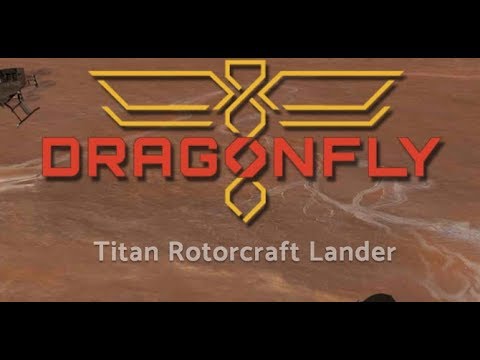NASA has just announced that it is sending a lander to Titan, a moon of Saturn. The lander will carry a robot helicopter to explore Titan. The mission is called Dragonfly. It is part of NASA’s New Frontiers program which is dedicated to high-priority solar system science projects. Current New Frontiers missions include Juno which is a mission to Jupiter, New Horizons which is currently flying through the Kuiper Belt and OSIRIS-Rex which is orbiting the small asteroid named Bennu.
Dragonfly includes a quadcopter. It has four pairs of coaxial propellers which are each mounted to the corners of the thirty feet long lander. The plan is for it to land and then make a series of five-mile hops so it can carry out experiments at different locations. It will take pictures and samples of the air and surface materials to examine their chemical composition. It will also take meteorological and seismological measurements at each location. The main goal of the mission is to determine whether there are organic molecules on Titan that could be the basis of some kind of life.
Saturn is over eighty-six billion miles from Earth. Titan is so cold that if there is water on the surface, it will be as hard as granite on Earth. Titan has a atmosphere fifty percent thicker than Earth which is compose mostly of nitrogen. The Cassini spacecraft orbited Titan and took many images and readings. Some of the surface features captured by Cassini include dunes composed of hydrocarbon sand, cryovolcanoes and even evidence of an ocean of liquid water under the surface. Cassini also found huge lakes of liquid methane and ethane close to the north pole. Radar images of the landscape revealed hills and rivers that flow into the lakes. This suggests that methane on Titan behaves in a way that resembles water on Earth. It has a similar cycle composed of evaporation, movement as vapor in the atmosphere, rain and large pools of liquid on the ground. Although the temperature on Titan is around -290° Fahrenheit, the methane cycle and lots of organic molecules may be involved in complex prebiotic chemistry reactions.
The Dragonfly mission is scheduled for a 2026 launch date assuming that the hardware for the mission will require about seven years to construct. Much of the instrumentation is based on known and tested designs. The power source will be a common radioisotope thermoelectric generator that uses plutonium to generate electricity. Solar power would not be useful because Titan only gets about one percent of the sunlight that falls on the Earth. The big question is whether or not the propellers will function correctly in the cold atmosphere. On the positive side, the gravity on Titan is only one seventh of the gravity on Earth and the atmosphere of Titan is much denser. This should make it easy to fly around on Titan. What winds there are on Titan are low velocity and should not present a problem. If Dragonfly is launched in 2026, it will not reach Titan until 2034.
The Dragonfly mission as envisioned should last for at least two and a half years. Unfortunately, this will not be enough time for the quadcopter to hop from the landing site near the equator to the huge lakes at the pole.
